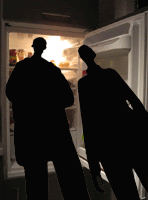Are Measles a Menace to Cancer?
 news you may not know
news you may not knowShe's really the sweetest little girl. Bright, fun and full of the wonder that most 7-year-olds possess. She's more likely to jump smack dab in the middle of a big rain puddle than she is to give a second thought to her new sneakers. Saturdays? Wow - you'd better bring your "A-Game," because she hits the floor running at the crack of way-too-early and doesn't stop until the sun drops below the far edge of the world.
So, why is she being so dang responsible about this measles thing? Sure, they had that section in school where they said you should be careful, respect others and not spread your illness around, but... You're her mother, for heaven's sake! You'd think she'd show a little empathy, snuggle up close, breath in your face or maybe, if you're lucky, give you a big smack right on the lips. But, no - she has to be Miss Responsibility.
At this rate, you'll never catch the measles...
Researchers at Mayo clinic are studying the use of the measles virus to combat three types of cancer: multiple myeloma, recurrent ovarian cancer and glioblastoma multiforme. The most recent study targeting multiple myeloma is unique in that it administers the measles virus intravenously. The other clinical trials deliver the measles virus directly to the tumor site. The underlying theory is that use of the gene-modified virus will allow the body to produce an immune response to the cancer.
Multiple myeloma is a cancer of the plasma cells within the bone marrow. These cells play a vital role in the immune system and, once compromised, patients are susceptible to recurrent infections. It's estimated that over 50,000 people in the United States currently have multiple myeloma.
OK - you've had it. You tiptoe into her room at 2am, sneak up to her bed and - pounce! You clamp her in a bear hug a grizzly would admire and, when she startles awake, you lay down the law: "OK, Missy - Measle me!"

















